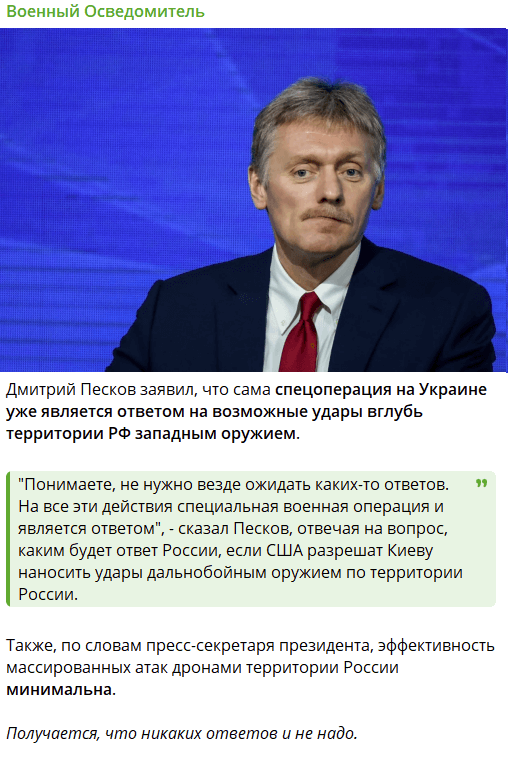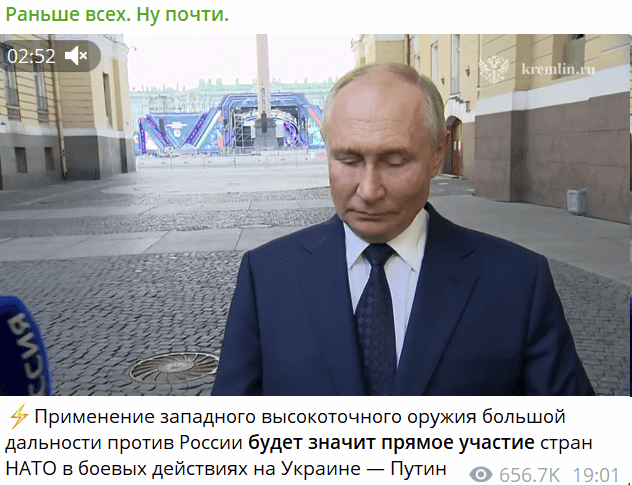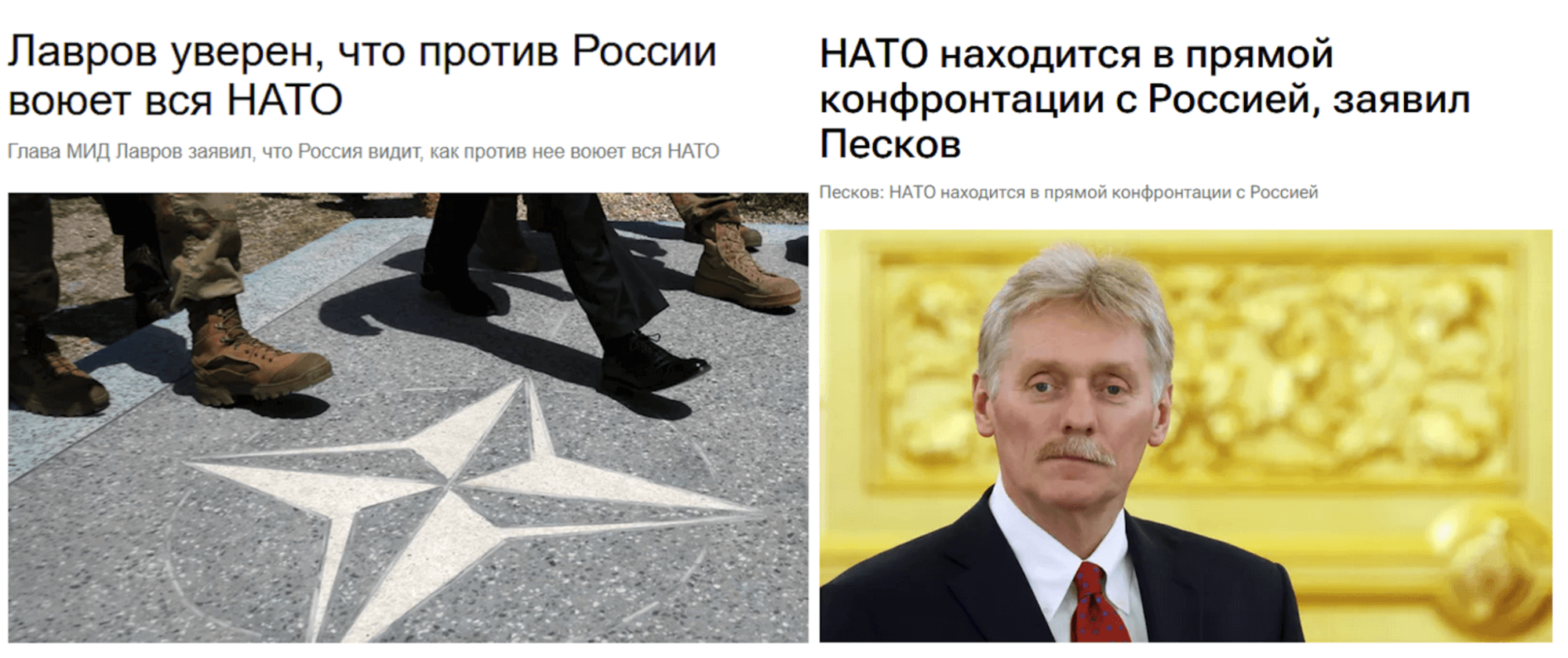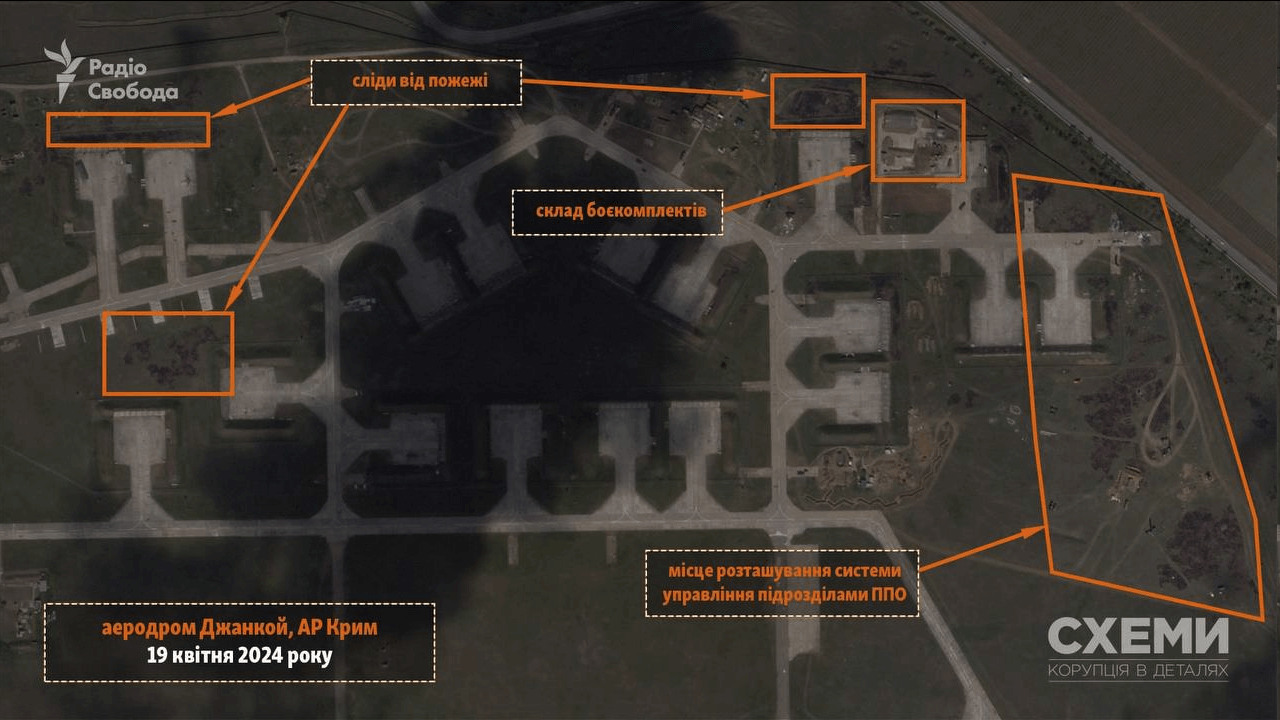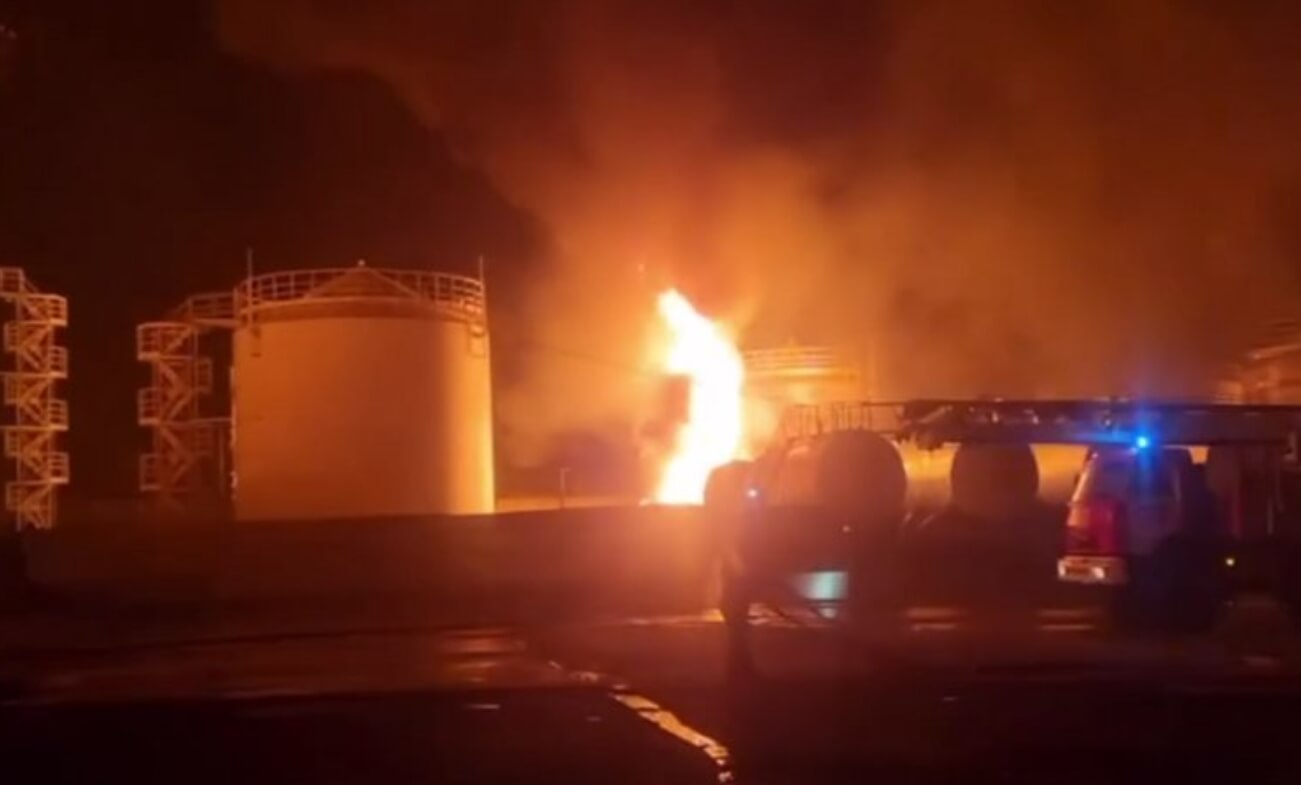While Ukraine, using its own drones and missiles, strikes military targets deep within Russian territory, it continues efforts to gain permission to carry out similar attacks with Western long-range weapons. In September 2024, anonymous sources in Western media frequently speculated about such permission, despite the lack of official information. However, this hasn’t stopped Russian propaganda from talking once again about “red lines” and a “war against NATO”. This article analyzes the latest Russian falsehoods regarding the alleged permission for long-range strikes on Russian territory.
History of permissions and prohibitions
The general term “long-range weapons” doesn’t precisely define the distance at which a weapon can hit targets. This category can include long-range artillery, HIMARS (GMLRS and ATACMS missiles), long-range drones, and Storm Shadow cruise missiles. It also includes Tomahawk long-range cruise missiles or intercontinental ballistic missiles. When Ukraine asks for permission to conduct long-range strikes on Russia, it primarily refers to strikes up to 300 km using Storm Shadow and ATACMS, as these are the only missiles that have already been supplied by partners but not yet fully “unlocked” for use in the war.
Since the U.S. began supplying its weapons, they have prohibited strikes deep into Russian territory. However, on May 30, 2024, the situation changed slightly: after a Russian offensive in the Kharkiv region, an unnamed U.S. official told Politico that Ukraine had been granted permission to attack Russian troops on Russian territory, but only in areas bordering Kharkiv. On May 31, U.S. Secretary of State Antony Blinken confirmed permission to use American weapons in border regions, without specifying the areas.
In June 2024, U.S. National Security Advisor Jake Sullivan stated that Ukraine could use American weapons to target Russian forces across all border territories, not just near Kharkiv. According to unnamed Ukrainian representatives speaking to The Washington Post, the permission applies to attacks up to 100 km from the Ukrainian border. However, official sources have not commented on the extent of this permission.
On September 6, 2024, U.S. Secretary of Defense Lloyd Austin said there were no changes in policy regarding Ukraine being allowed to strike deep into Russia with American weapons, as it “would not change the course of the war in Ukraine’s favor”.
Even though The Guardian reported on September 11 about permission to use Storm Shadow missiles, British Foreign Secretary David Lammy did not mention anything during his visit to Kyiv. This permission did not emerge after the meeting between U.S. President Joe Biden and British Prime Minister Keir Starmer, either.
Ukrainian President Zelenskyi’s trip to the U.S. has yet to lead to any policy changes on the permission. On September 28, President Zelensky’s spokesperson Serhii Nykyforov reiterated that Ukraine still does not have the final permission to strike deep within Russian territory.
However, Russian propaganda isn’t wasting time. While experts and “anonymous sources” in the media speculated about when Ukraine would receive permission, Russians had already prepared several responses on how they would react to long-range strikes. Their goal remains unchanged — to discredit Ukraine, the West, and once again scare the world with “escalation”.
Manipulation: Russia has “inviolable” red lines
As soon as rumors of the yet-unconfirmed permission to strike emerged, Russia began to react. Initially, there were general statements about “appropriate responses” to such a decision. Then it became more interesting: Kremlin spokesman Peskov claimed that the so-called “special military operation” is already a response to potential long-range strikes.
Previously, Russia threatened “terrible consequences” for any Western action, from vague threats of “we have ways to respond” to consistent claims of using nuclear weapons. But alongside these threats, Russia creates the illusion that “everything is under control” and “going according to plan”, gradually shifting its “red lines”.
Screenshot of the post
Peskov once again changed or added to the reasons for the so-called “special military operation”, which in reality is Russia’s unprovoked aggression against Ukraine since 2014. At that time, the West wasn’t even considering providing long-range missiles. Before February 2022, there was no talk of transferring such systems either: Ukraine received anti-tank guided missiles, man-portable air defense systems, small arms, and ammunition. No long-range missiles.
However, by the end of September, the rhetoric of “self-reassurance” was adjusted. On September 25, Putin presented an updated nuclear deterrence doctrine, stating that Russia recognizes an attack by a non-nuclear state supported by a nuclear one as a joint attack. Furthermore, Russia reserves the right to use nuclear weapons if there is information about a massive deployment of strategic or tactical aircraft, cruise missiles, drones, etc.
Although it is unclear what is meant by “massive”, on September 27, reports emerged of drones in Russia’s Rostov region, and on the night of September 29, Russia’s Ministry of Defense claimed to have shot down 125 drones. It’s impossible to verify or refute this number from independent sources. But can this quantity be considered a “massive deployment”? After these attacks, Peskov stated that there is no need to overemphasize the new nuclear doctrine or look for any connection between these events. Naturally, he added that the so-called “special military operation” is still going according to plan.
Of course, it is impossible to completely ignore the nuclear threat from Russia. It has the world’s largest stockpile of such weapons — approximately 5.6 thousand warheads (1,822 strategic and 1,558 tactical, with the rest either in reserve or awaiting disposal). Russia also possesses a nuclear triad — land, sea, and air-based components of strategic nuclear weapons.
At the same time, attention should be paid to the contradictions Russia regularly produces. It keeps changing its “red lines”: first threatening a nuclear strike “if Ukraine regains nuclear weapons”, then if Russia is held accountable for war crimes. Later, Medvedev threatened to attack the Rammstein Coalition countries with nuclear weapons if Russia is pushed to defeat. This last condition is vague — what exactly Russia considers defeat is unclear. The situation is similar with the new nuclear doctrine: initially, Putin claimed that the massive deployment of drones over Russian territory would justify the use of nuclear weapons. But after the drone attacks, Peskov backtracked, saying there was no need to connect the doctrine to the attacks.
Fake: Strikes with Western weapons mean NATO is involved in the war
On September 11, The Guardian, citing its sources in the British government, reported that Ukraine would unofficially be allowed to use Storm Shadow missiles against military targets on Russian territory. Already on September 12, Putin responded to this unconfirmed information, stating that allowing Western precision weapons to be used on Russian territory would signify NATO’s direct involvement in the Russia-Ukraine war.
Screenshot of the post
This is yet another contradiction because the Kremlin constantly claims that Russia has already been fighting NATO in Ukraine for a long time. Both Russian propagandists and officials have made such statements. For instance, in March 2023, propagandist Simonyan claimed that Russia supposedly defeated Ukraine in the first 2-3 days of the invasion, and now it’s fighting NATO. Similarly, on February 2, 2023, Russian Foreign Minister Lavrov said that the entire NATO bloc was fighting against them. Throughout 2023-2024, Peskov repeatedly stated that Russia was at war with the West. So, the Russians themselves can’t decide: has the “war with NATO” already begun long ago, or is it just about to start?
Russian representatives’ claims about the “war between Russia and NATO”
Moreover, with this statement, Putin again confirmed that the temporarily occupied territories of Ukraine are not part of Russia. Otherwise, why does he “turn a blind eye” to strikes on Russian military targets in Crimea or the Donetsk and Luhansk regions using Western Storm Shadow and ATACMS missiles?
Consequences of a missile strike on a Russian military airfield in occupied Dzhankoi. Source: Schemes
Consequences of a missile strike on an oil depot in occupied Rovenky, Luhansk region. Source: Militarnyi
Fake: Ukraine lacks its own intelligence data
Putin also claimed that Ukraine doesn’t have its own intelligence data. According to him, the West allegedly supplies all such data, meaning without information from the U.S. and European countries, Ukrainian forces wouldn’t be able to use long-range missiles against targets deep inside Russia.
Ukraine doesn’t deny that it receives valuable intelligence from its partners. However, this is not its only source of information. According to Kyrylo Budanov, head of Ukraine’s Main Intelligence Directorate, Western data supplements, rather than replaces, Ukrainian intelligence. As The New York Times reports, after the Ukrainian Armed Forces’ offensive in the Kursk region, the U.S. and Britain provided Ukraine with satellite images of the area. Similarly, during other operations, partner countries provided satellite data, or Ukraine purchased images from private companies.
Additionally, Ukraine receives satellite data not only from Western partners. Back in August 2022, Serhii Prytula’s Foundation, funded by donations from Ukrainians, bought access to a satellite from the Finnish company ICEYE. This gives the Ministry of Defense the ability to receive real-time satellite images around the clock. The advantage of the Finnish satellite is that it operates using radar, with the signal penetrating through clouds, smoke, and even tree canopies. This allows the Ukrainian Armed Forces to monitor ground targets day and night, regardless of rain, snow, or fog.
On June 26, 2024, the Main Intelligence Directorate of the Ministry of Defense of Ukraine, reported on the work of the “people’s satellite”. Since its launch and access to the ICEYE constellation, a total of 4,173 images of enemy objects have been taken. About 38% of the entire dataset was used to prepare for fire strikes.
Fake: NATO soldiers will operate Western equipment in Ukraine
In addition to claims that Ukraine “lacks its own intelligence”, Putin stated that NATO soldiers would have to input the data for missile launches because Ukrainians allegedly don’t know how to do it themselves.
This is a persistent Russian narrative about Western “mercenaries” or even “regular soldiers” supposedly controlling all the equipment supplied to Ukraine instead of Ukrainians.
Similar statements were made after Ukraine received other equipment like HIMARS launchers, Patriot air defense systems, or F-16 fighter jets. Fake creators claimed that Ukraine didn’t have its own operators, and therefore, it is impossible to do without the “Western military”.
In reality, Ukrainian troops undergo training for every new type of Western equipment. In 2022, then-Chairman of the U.S. Joint Chiefs of Staff General Mark Milley reported on the training of Ukrainian soldiers on HIMARS. In July 2023, journalists from Suspilne visited Grafenwohr, Germany, where Ukrainian troops were being trained on M1A1 Abrams tanks. The same is true for training on Patriot systems and F-16s — there are public interviews and reports about Ukrainian soldiers mastering this new technology and using it against the enemy on the front lines.
Strategy of Intimidation
On October 3, the newly appointed NATO Secretary General Mark Rutte, during his visit to Kyiv, stated that the issue of granting permission to use long-range weapons would be discussed at the “Ramstein” meeting on October 12.
While there’s still no official permission, Russia continues to manipulate and lie. The same pattern repeats — Russia pretends as if nothing is happening (“everything is going according to plan”) while simultaneously threatening escalation, even to the point of nuclear weapons. The primary audience is the West, which Russia is trying to dissuade from supporting Ukraine.
Overall, this fits into the structure of Russia’s disinformation campaign, recently uncovered in the U.S. In an FBI agent’s report on this operation, notes by Russian political strategist Ilya Gambashidze are mentioned. The notes quote Sergey Kiriyenko, the first deputy head of the Russian presidential administration. Kiriyenko told campaign supervisors to induce a “nuclear psychosis” and accuse the U.S. of preparing Europe for war with Russia. Thus, nuclear blackmail and escalation threats are not random statements from Russian officials. They are part of a well-planned strategy, used every time there’s a need to slow down military aid to Ukraine.
Attention
The author doesn`t work for, consult to, own shares in or receive funding from any company or organization that would benefit from this article, and have no relevant affiliations
